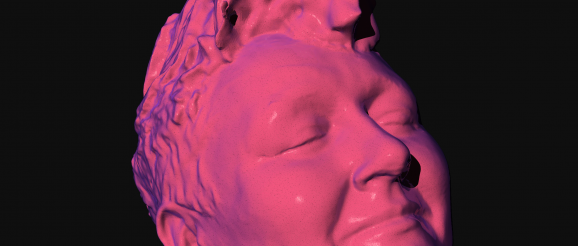Innovation unleashed: The application of 3D surface body scanner expertise to art & theatre

Three-dimensional (3D) surface imaging (also known as 3D body, optical or photonic scanning) creates digital 3D images of the external geometry of the human body, which when stitched together creates a digital -to scale – representation, herein referred to as a digital model (also known as a humanoid, avatar, or twin). Within the Sports Engineering Group (SERG) at Sheffield Hallam Univeristy (SHU) we use an array of 3D imaging system to capture, in a digital 3D form, the human body and equipment for the purpose of critically evaluating or designing, methods and equipment in performance and health. However, we have recently been working on a fascinating intersection of sports engineering expertise and the worlds of art and theatre. Within this blog article we will revisit two recent case studies of or work and delve into the profound impact when technological acumen meets the unrestrained world of artistic innovation, opening new dimensions for expression and pushing the boundaries of what’s possible in the intersection of sports engineering, art, and theatre. CASE STUDY: Integrating 3D imaging into theatre Beck Gadsby, Founder of Inside Theatre and Sheffield-based Theatre Director and Producer, has a passion for experimenting with innovative digital technology for the future of performance. As the director of 5 Years, a new play written by Hayley Davis, Beck sought our 3D imaging and modelling expertise. This was used to create an animated model to explore the play’s theme of the perfect body, and what people would do to achieve it. 3D imaging experts from our Sports Engineering Research Group, Dr John Hart and Dr Alice Bullas, scanned and generated digital 3D and miniature physical models of both actors in the play. The 3D model of the lead actor was then animated by Games Art Course Lecturer and Character Design Specialist, Jamie Gibson. Images provided by Mark Turner The animated 3D and miniature physical models are now integrated into the 5 years play, set to tour around the UK in 2023. “By using this technology, we were able to demonstrate the concept of the piece – what do we lose in the pursuit of perfection – in a more tangible and visual way. It has been very well received by audiences who have said it is like a third actor on stage.” Beck Gadsby, Director, 5 years CASE STUDY: Integrating 3D imaging into theatre Jennifer (Jen) Booth, is a Lens Based Artist & Educator who’s work responds to the labour of the female body after & during disease, with conceptual methodologies, engagement, photo installation & education. Jen sought to generate several 3D images of her external form from which moulds could be developed into order to help process her project titled: *Ah Pooka SAKE : *. Within which Jen explores *Porcelain Doll Syndrome and the post environmental effects & trauma on the diseased female form, and how this is documented and explored through installation and performative based creative practice * Once again, the 3D imaging experts from our Sports Engineering Research Group, Dr John Hart and Dr Alice Bullas, 3D scanned and generated digital 3D and, miniature and life size, physical models of Jen. Simon Goodwill, Head of the Sports Engineering Research Group said: “The potential translational applications of our sports engineering are vast from health to, as this project has shown, art. We are delighted we have been able to assist Jen with progressing her project and look forward to all visiting and celebrating the exhibition once complete.” The digital 3D and, miniature and life size, physical models are now being used by Jen to generate the moulds for her project and assessing the future development and funding of subsequent work. “This experience has given me the opportunity to have a physical model to enable creative dialogue and to nurture cooperative practice and knowledge across the Arts, Science Wellbeing and Sport, and to explore with industry & Academic specialist .” Jennifer Booth, Artist & Director of Typeset. This work demonstrates the potential, wide, interdisciplinary impact of our imaging technology in Sports Engineering, from the arts and theatre to ergonomics, fashion or design. The research, in combination with our Sheffield Multimodal Imaging Centre and the strategic partnership between Canon Medical and the Advanced Wellbeing Research Centre provides the perfect opportunity for body imaging research and consultancy. This work was funded through the European Regional Development Fund: Digital Innovation for Growth (DIfG). While DIFG is no longer accepting projects, our SHU small business experts can help you take your business to the next level, find out more here. For more information about work we do in SERG check out our website, our annual review or our MSc Sports Engineering course.
